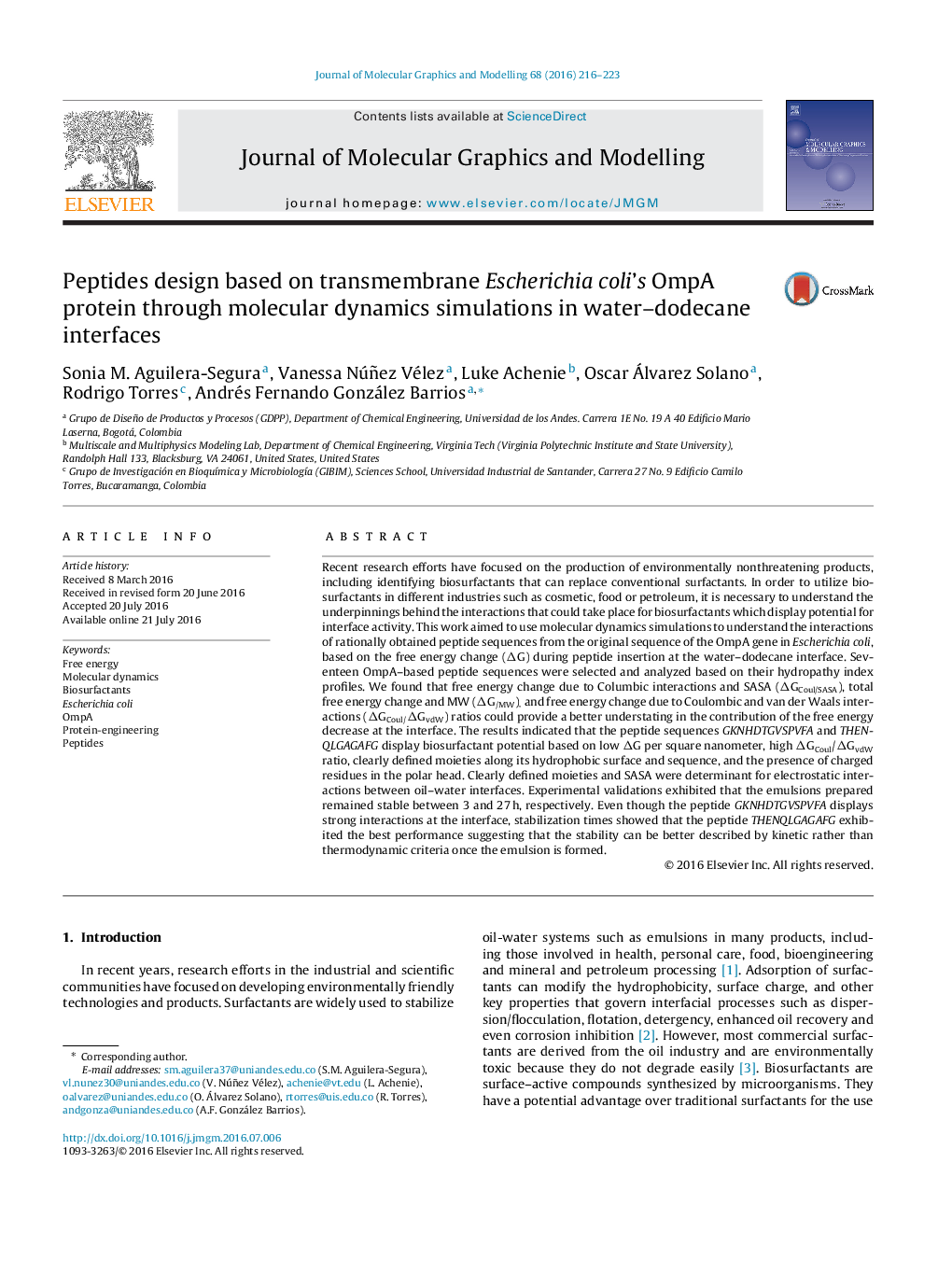| کد مقاله | کد نشریه | سال انتشار | مقاله انگلیسی | نسخه تمام متن |
|---|---|---|---|---|
| 443234 | 692690 | 2016 | 8 صفحه PDF | دانلود رایگان |
• We designed surfactant peptides from a transmembrane protein OmpA.
• Coulombic interactions play a big role in stability.
• Clear defined moieties are crutial in biosurfactants design.
Recent research efforts have focused on the production of environmentally nonthreatening products, including identifying biosurfactants that can replace conventional surfactants. In order to utilize biosurfactants in different industries such as cosmetic, food or petroleum, it is necessary to understand the underpinnings behind the interactions that could take place for biosurfactants which display potential for interface activity. This work aimed to use molecular dynamics simulations to understand the interactions of rationally obtained peptide sequences from the original sequence of the OmpA gene in Escherichia coli, based on the free energy change (ΔG) during peptide insertion at the water–dodecane interface. Seventeen OmpA–based peptide sequences were selected and analyzed based on their hydropathy index profiles. We found that free energy change due to Columbic interactions and SASA (ΔGCoul/SASA), total free energy change and MW (ΔG/MW), and free energy change due to Coulombic and van der Waals interactions (ΔGCoul/ΔGvdW) ratios could provide a better understating in the contribution of the free energy decrease at the interface. The results indicated that the peptide sequences GKNHDTGVSPVFA and THENQLGAGAFG display biosurfactant potential based on low ΔG per square nanometer, high ΔGCoul/ΔGvdW ratio, clearly defined moieties along its hydrophobic surface and sequence, and the presence of charged residues in the polar head. Clearly defined moieties and SASA were determinant for electrostatic interactions between oil–water interfaces. Experimental validations exhibited that the emulsions prepared remained stable between 3 and 27 h, respectively. Even though the peptide GKNHDTGVSPVFA displays strong interactions at the interface, stabilization times showed that the peptide THENQLGAGAFG exhibited the best performance suggesting that the stability can be better described by kinetic rather than thermodynamic criteria once the emulsion is formed.
Figure optionsDownload high-quality image (87 K)Download as PowerPoint slide
Journal: Journal of Molecular Graphics and Modelling - Volume 68, July 2016, Pages 216–223
